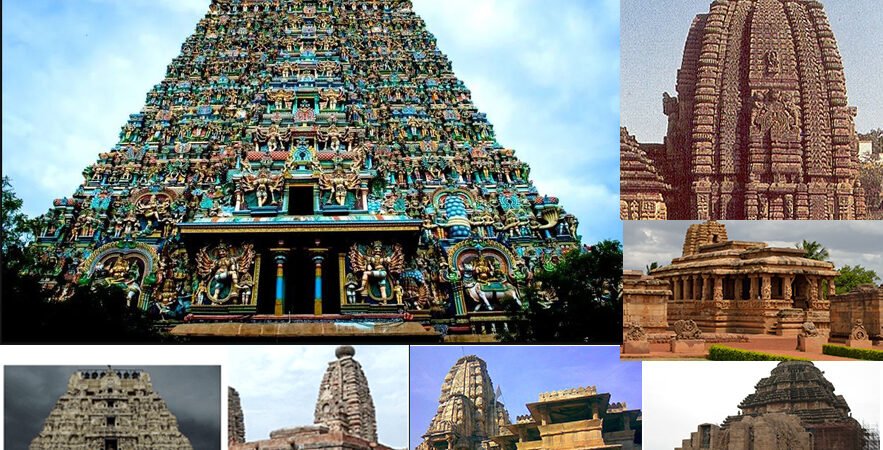Introduction
India, the land of diverse cultures and traditions, is a treasure trove of magnificent temples that showcase the nation’s unparalleled architectural heritage. These temples, standing tall for centuries, are not just places of worship but also iconic symbols of artistry, spirituality, and culture. Each region of India reflects its own architectural brilliance, from the towering gopurams of Tamil Nadu to the intricately carved stone temples of Khajuraho and the majestic sun temple of Konark. Let’s take a journey through some of the most iconic Indian temples and their unique styles that captivate the world.
1. The Architectural Marvels of Indian Temples
Indian temples are more than just sacred spaces; they are masterpieces of design, engineering, and artistry. Here are some key architectural styles that define them:
Dravidian Architecture (South India): Characterized by massive gopurams (gateway towers) and intricate sculptures, examples include Brihadeeswarar Temple in Tamil Nadu and Meenakshi Temple in Madurai.
Nagara Architecture (North India): Known for its beehive-shaped towers (shikharas) as seen in temples like Khajuraho and Mukteshwar Temple in Odisha.
Vesara Style (Deccan Region): A fusion of Dravidian and Nagara styles, found in Karnataka’s temples like Hoysaleswara Temple.
Kalinga Style (Odisha): Represented by the Sun Temple at Konark, these temples are adorned with intricate carvings depicting deities and everyday life.
2. Famous Indian Temples and Their Stories
Brihadeeswarar Temple (Tamil Nadu): Known as the “Big Temple,” it is a UNESCO World Heritage Site built by Raja Raja Chola I. Its grandeur and precision engineering are unparalleled.
Sun Temple (Konark, Odisha): Designed as a giant chariot of the Sun God, this temple is a testament to the craftsmanship of the Kalinga dynasty.
Khajuraho Temples (Madhya Pradesh): Famous for their exquisite sculptures, these temples narrate tales of love, life, and spirituality.
Shri Jagannath Temple (Puri, Odisha): An architectural gem and one of the four sacred Char Dham pilgrimage sites in India.
3. Why Indian Temple Architecture Stands Out Globally
Innovative Engineering: Many temples, like the Kailasa Temple in Ellora, were carved out of a single rock, a feat unmatched in history.
Spiritual Geometry: Temples are designed with precise geometry to align with cosmic energies, creating a divine experience for visitors.
Intricate Details: From the minute carvings of Khajuraho to the colossal scale of Madurai’s Meenakshi Temple, every inch tells a story.
4. Exploring Temples in Modern Times
Today, Indian temples attract millions of tourists from across the globe, drawn to their architectural beauty and spiritual significance. Whether you’re a history enthusiast, an architecture lover, or a spiritual seeker, these temples have something to offer.
Conclusion
Indian temples are a blend of faith, art, and science. Their timeless beauty continues to inspire awe and respect worldwide. Embark on this journey to explore the grandiosity of Indian temple architecture and immerse yourself in a world of spirituality and creativity.
